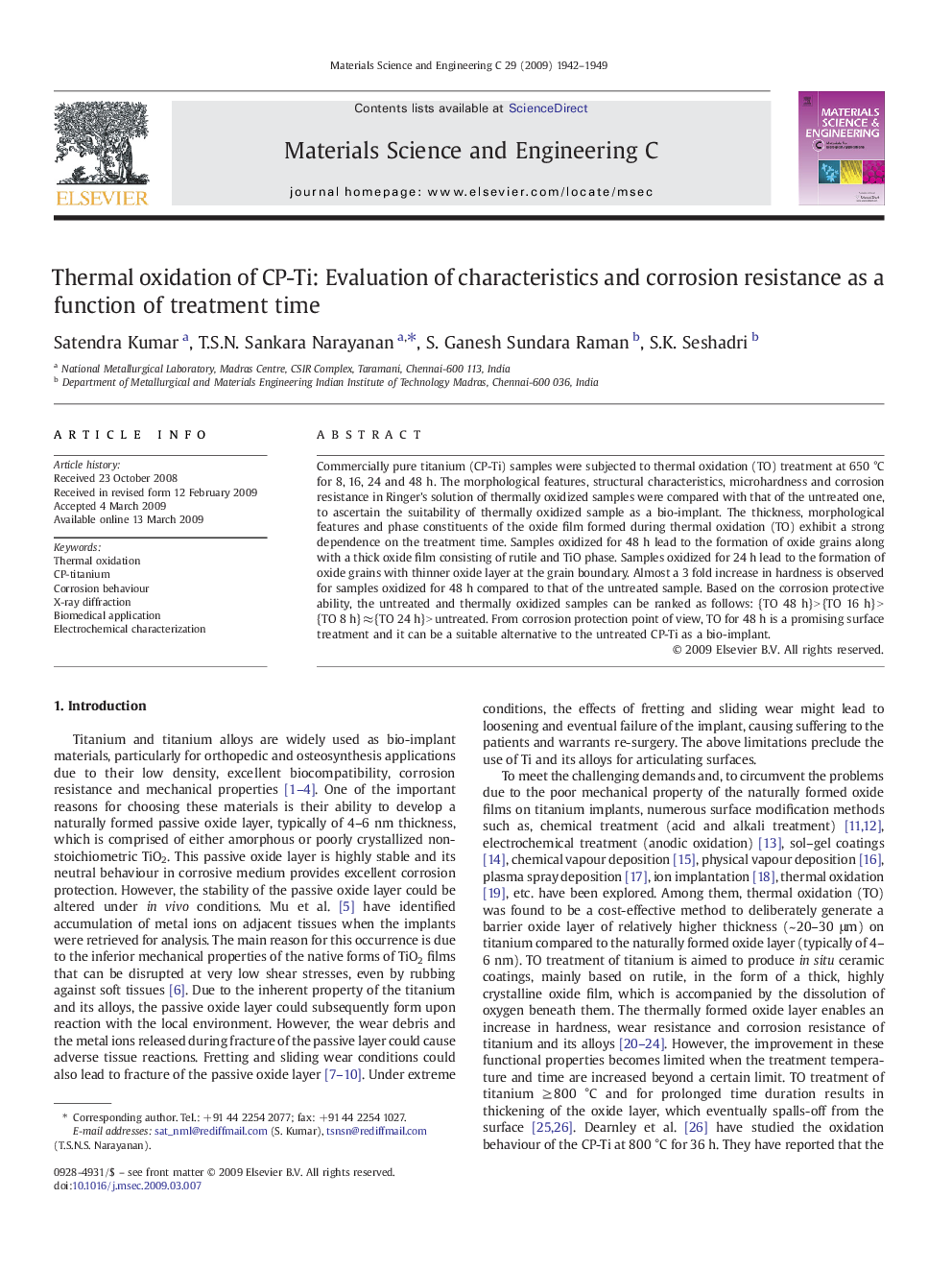| Article ID | Journal | Published Year | Pages | File Type |
|---|---|---|---|---|
| 1429941 | Materials Science and Engineering: C | 2009 | 8 Pages |
Commercially pure titanium (CP-Ti) samples were subjected to thermal oxidation (TO) treatment at 650 °C for 8, 16, 24 and 48 h. The morphological features, structural characteristics, microhardness and corrosion resistance in Ringer's solution of thermally oxidized samples were compared with that of the untreated one, to ascertain the suitability of thermally oxidized sample as a bio-implant. The thickness, morphological features and phase constituents of the oxide film formed during thermal oxidation (TO) exhibit a strong dependence on the treatment time. Samples oxidized for 48 h lead to the formation of oxide grains along with a thick oxide film consisting of rutile and TiO phase. Samples oxidized for 24 h lead to the formation of oxide grains with thinner oxide layer at the grain boundary. Almost a 3 fold increase in hardness is observed for samples oxidized for 48 h compared to that of the untreated sample. Based on the corrosion protective ability, the untreated and thermally oxidized samples can be ranked as follows: {TO 48 h} > {TO 16 h} > {TO 8 h} ≈ {TO 24 h} > untreated. From corrosion protection point of view, TO for 48 h is a promising surface treatment and it can be a suitable alternative to the untreated CP-Ti as a bio-implant.
